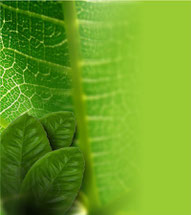Theme III.b: Micromorphological characteristics of plant drugs (vegetal drugs, herbal drugs)

Plant tissue
Overview of plant tissues
Pharmacognosy has a special interest in the study of plant tissue, since in these multicellular structures are stored the active ingredients that provide the pharmacological effects of medicinal plants.
In the plant kingdom diversity are many organic compounds with specific physiological functions within the such as vitamins, enzymes, carbohydrates, tannins, flavonoids, alkaloids, proteins, etc., a wide range of substances which have beneficial effects on body to prevent and alleviate human suffering.
The tissue in which the active ingredient is located, is a factor to consider in the application of an appropriate extraction technique.
Origin of plant tissues
The tissues are originating in the seed embryo, after fertilization of the zygote. The embryo will consist initially only of embryonic tissue, composed by cells that have the capacity to reproduce.
Once the embryo starts to develop and grow a little larger, the growth is polarized in the apex and the base of the seed. Thus begins the differentiation characteristic of meristematic tissues (possessing permanent capacity of cell division) and the final adult tissue in which have disappeared the cell division capacity, temporarily or permanently. This difference is only characteristic of higher plants.
Tissues are composed of cells similar in structure and function, which have growing points due to the cell division and form new tissues. (See also: Cell Theory)
These growth areas are located at the ends (apexes) of stems and roots (main growth) and in the walls of both organs determining secondary growth.
In vascular plants are recognized three major tissue systems: dermal, vascular and fundamental.
Plant tissues can be divided into two main groups:
Meristematic or embryonic tissues
Adult tissues


 Pharmacognosy´s topics - Medicinal plants
Pharmacognosy´s topics - Medicinal plants


Write a comment
Abeika (Thursday, 16 January 2014 17:59)
I love this article and I have benefited greatly from it. thank you!